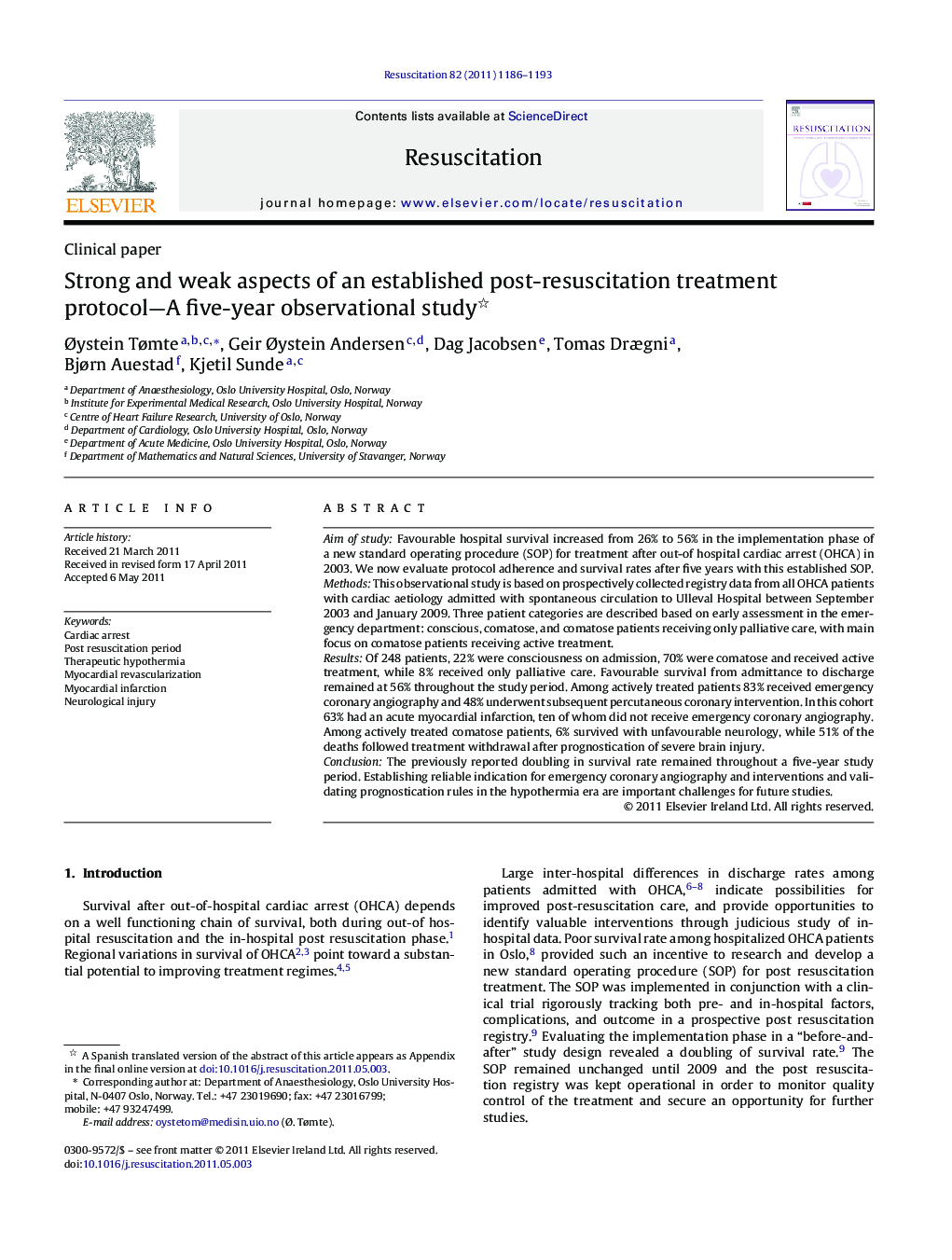| Article ID | Journal | Published Year | Pages | File Type |
|---|---|---|---|---|
| 5999323 | Resuscitation | 2011 | 8 Pages |
Aim of studyFavourable hospital survival increased from 26% to 56% in the implementation phase of a new standard operating procedure (SOP) for treatment after out-of hospital cardiac arrest (OHCA) in 2003. We now evaluate protocol adherence and survival rates after five years with this established SOP.MethodsThis observational study is based on prospectively collected registry data from all OHCA patients with cardiac aetiology admitted with spontaneous circulation to Ulleval Hospital between September 2003 and January 2009. Three patient categories are described based on early assessment in the emergency department: conscious, comatose, and comatose patients receiving only palliative care, with main focus on comatose patients receiving active treatment.ResultsOf 248 patients, 22% were consciousness on admission, 70% were comatose and received active treatment, while 8% received only palliative care. Favourable survival from admittance to discharge remained at 56% throughout the study period. Among actively treated patients 83% received emergency coronary angiography and 48% underwent subsequent percutaneous coronary intervention. In this cohort 63% had an acute myocardial infarction, ten of whom did not receive emergency coronary angiography. Among actively treated comatose patients, 6% survived with unfavourable neurology, while 51% of the deaths followed treatment withdrawal after prognostication of severe brain injury.ConclusionThe previously reported doubling in survival rate remained throughout a five-year study period. Establishing reliable indication for emergency coronary angiography and interventions and validating prognostication rules in the hypothermia era are important challenges for future studies.
